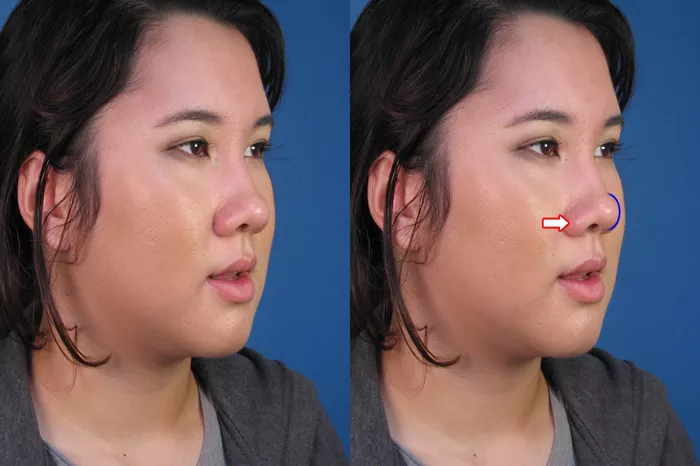Asian rhinoplasty, also known as Asian nose surgery, is a specialized form of rhinoplasty tailored to the unique anatomical features of Asian patients. It involves enhancing the nasal structure while preserving ethnic characteristics. The cost of Asian rhinoplasty varies widely based on several factors. This article explores these factors in detail, providing a comprehensive guide to the expenses involved.
Understanding Asian Rhinoplasty
What is Asian Rhinoplasty?
Asian rhinoplasty differs from traditional rhinoplasty. It addresses specific concerns like a low nasal bridge, wide nostrils, and a rounded tip. The procedure often includes augmentation techniques to create a more defined nose.
Why Choose Asian Rhinoplasty?
Asian rhinoplasty is chosen for both aesthetic and functional reasons. Many seek to improve nasal appearance while maintaining ethnic identity. It can also address breathing issues and other functional problems.
Factors Influencing the Cost
Surgeon’s Expertise
Experience and Reputation: Highly experienced surgeons with a strong reputation typically charge more. Their expertise ensures better results and reduced risk.
Specialization: Surgeons specializing in ethnic rhinoplasty or specifically Asian rhinoplasty may have higher fees due to their specialized skills.
Geographic Location
Country: Costs vary significantly by country. Procedures in the United States and Western Europe tend to be more expensive than in Asia.
City: Within countries, urban centers often have higher costs than rural areas due to higher living costs and demand.
Surgical Facility
Hospital vs. Clinic: Hospitals may charge more than private clinics due to higher overheads and additional services.
Accreditation: Accredited facilities may have higher costs due to stringent standards and higher quality care.
Type of Procedure
Augmentation Rhinoplasty: Involves adding implants or cartilage grafts to enhance the nasal bridge and tip. This can increase the cost.
Reduction Rhinoplasty: Involves reshaping and reducing nasal structures. Complexity can affect pricing.
Combination Procedures: Combining rhinoplasty with other facial surgeries can increase overall costs but might offer a better deal than separate procedures.
Anesthesia
Local vs. General Anesthesia: General anesthesia is more expensive than local anesthesia. The choice depends on the procedure’s complexity and patient preference.
Anesthesiologist Fees: Experienced anesthesiologists charge higher fees, contributing to overall costs.
Pre- and Post-Operative Care
Consultations: Initial and follow-up consultations add to the cost. Some surgeons include these in the total fee, while others charge separately.
Medication and Supplies: Post-operative medications, bandages, and other supplies are additional costs.
Recovery Facility: Staying in a recovery facility post-surgery can increase expenses, especially in high-end or luxury facilities.
Average Cost by Region
United States
Range: $6,000 to $15,000
Average: Around $10,000
Factors: High demand for specialized surgeons and advanced facilities contribute to higher costs.
Europe
Range: €5,000 to €12,000
Average: Approximately €7,500
Factors: Similar to the US, with variations based on country and city.
Asia
Range: $3,000 to $8,000
Average: Around $5,000
Factors: Lower costs due to high competition and the prevalence of specialized clinics.
Other Regions
Latin America: $2,500 to $7,000, with an average of $4,500. Popular for medical tourism due to lower costs.
Middle East: $4,000 to $10,000, with an average of $6,500. High demand for cosmetic procedures contributes to varied pricing.
See also: How Much Do Nose Jobs Cost in Canada?
Additional Costs to Consider
Travel Expenses
Medical Tourism: Many patients travel to other countries for lower costs or specialized surgeons. This includes travel, accommodation, and related expenses.
Local Travel: Even within the same country, traveling to urban centers for the best surgeons can add to the cost.
Time Off Work
Recovery Period: Patients may need time off work for recovery, affecting income. This is an indirect but important cost to consider.
Revision Surgery
Complications: In rare cases, complications may require revision surgery, adding to the overall cost.
Dissatisfaction: Some patients opt for revisions if not satisfied with the initial results. This can significantly increase expenses.
Insurance and Financing Options
Insurance Coverage
Cosmetic vs. Functional: Insurance typically does not cover cosmetic surgery. However, if the procedure is for functional reasons, partial coverage might be possible.
Documentation: Thorough documentation of functional issues is necessary for insurance claims.
Financing Plans
Payment Plans: Many clinics offer payment plans to spread the cost over time.
Medical Loans: Specialized loans for medical procedures are available, though interest rates and terms vary.
Conclusion
Asian rhinoplasty is a specialized procedure with costs influenced by numerous factors, including the surgeon’s expertise, geographic location, type of procedure, and associated care. While prices vary widely, understanding these factors can help prospective patients budget effectively and choose the best options for their needs. By considering all aspects, including additional and indirect costs, patients can make informed decisions about undergoing Asian rhinoplasty.
Related topic:
How Much is a Nose Job on Finance?
How Much Is A Nose Job With Dr. Richard Zoumalan?
How Long Is Nose Numb After Rhinoplasty?


